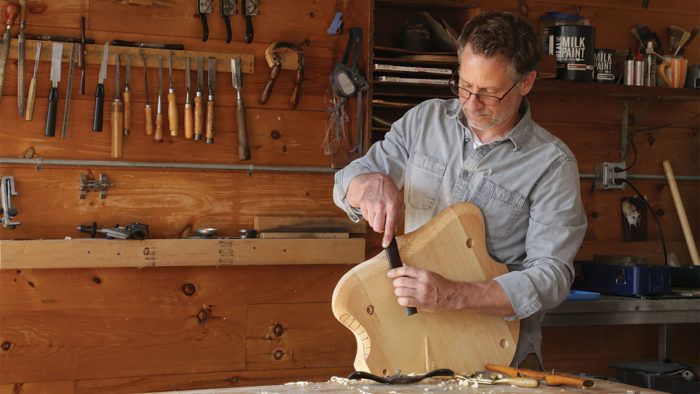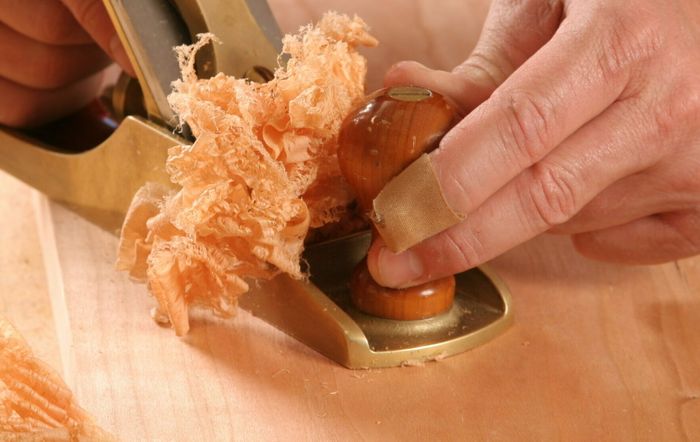Spokeshave Fundamentals
Chairmaker Peter Galbert takes you through the different types of spokeshave, how to tune them, where to use each type, and which ones he likes best.

Synopsis: Take your handplane skills “off road” with the versatile, fun, and funky spokeshave. These tools can help you rapidly shape wood to the curves you need, leaving a finish-ready surface behind. Peter Galbert takes you through the different types of spokeshave, how to tune them, where to use each type, and which ones he likes best.
When I picked up a spokeshave for the first time, I felt like all the fun, control, and empowerment I’d looked for in handplanes was finally at my fingertips. Since then, spokeshaves have become integral to my work; they can do things my bench planes can only dream of. I can rapidly shape wood to the curves I want while leaving a finish-ready surface behind. I consider them the off-road vehicles of the handplane family.
Knowing how to choose, tune, and use spokeshaves is key to getting the most out of them. There are a few types and brands I use, and each excels in specific situations. Some work like short-soled handplanes that take shavings of consistent thickness, and some are more akin to carving tools, which vary their depth of cut depending on their orientation to the workpiece. I’ll take you through the differences, what they mean in practice, and my favorite kinds of each. While specialty spokeshaves exist and can be useful, the large bulk of the time I use standard versions.
Metal vs. wooden body
I find it most helpful to organize spokeshaves into two categories, those with metal bodies and those with wooden ones. There are subcategories, but metal vs. wooden is a great place to start. This is because the anatomy and geometry of each makes them well suited to different tasks, and knowing which to pick up when—as well as how to use it—will lead to better, more enjoyable work.
Metal body—Metal-body spokeshaves are essentially shortsoled planes with handles coming out of the sides, making them light and nimble. The blades are bevel down, and they have a lever cap that acts as a chip breaker. The soles come in two main profiles, flat and round. Flat is best on convex or flat shapes, but it can bottom out in concave shapes. I use round soles for these.
For light shaping and finish surfacing, I prefer metal shaves. Because they are so akin to bench planes, with similar bed angles and anatomy, they excel at similar tasks, working well along the grain. This is also why I prefer these shaves to have tight mouths. A tight mouth translates to a limited depth of cut, but it also means a cleaner surface.
There are many ways to push, pull, and hold spokeshaves. With metal shaves, I use three grips, but they all have one thing in common: pressure just atop the sole. Don’t be tempted to focus your grip on the handles.

From Fine Woodworking #285
To view the entire article, please click the View PDF button below.
 |
|
 |
|
 |
Fine Woodworking Recommended Products

Veritas Precision Square

Tite-Mark Marking Gauge

Bahco 6-Inch Card Scraper









Comments
The link to the PDF of this article is broken (25/9/2020).
Lataxe
Where is the pdf file? There is no file.
I just looked at the digital "flip" edition of this issue and found that it is complete....full of articles which are either not listed here, and/or have no pdf files here. Why am I paying for electronic access to nothing????
Ottertail,
Like you just found, you have access to the full issue the day it comes out. But the individual article PDFs come out over the course of a few weeks.
Missed the comments. Sorry about that. Should be fixed now.
Ben
Thanks for the explaination. Call it a personal quirk, but I prefer to download the pdf articles to read and to build my home reference library. By using my own classification system, I can find pdfs of the articles that I need, when I need them. Too bad I can't update my FWW archive that I bought a few years back. I should have waited for the day that I drop this subscription before buying the archive. That is why I dislike "flip" magazines - they are not downloadable. I am curious why there is such a lag in posting titles and the links to the pdf articles?
Regards
There are a bunch of reasons I do it that way. SEO, and the ability to feature each article prominently on the homepage are the two key factors though.
Log in or create an account to post a comment.
Sign up Log in